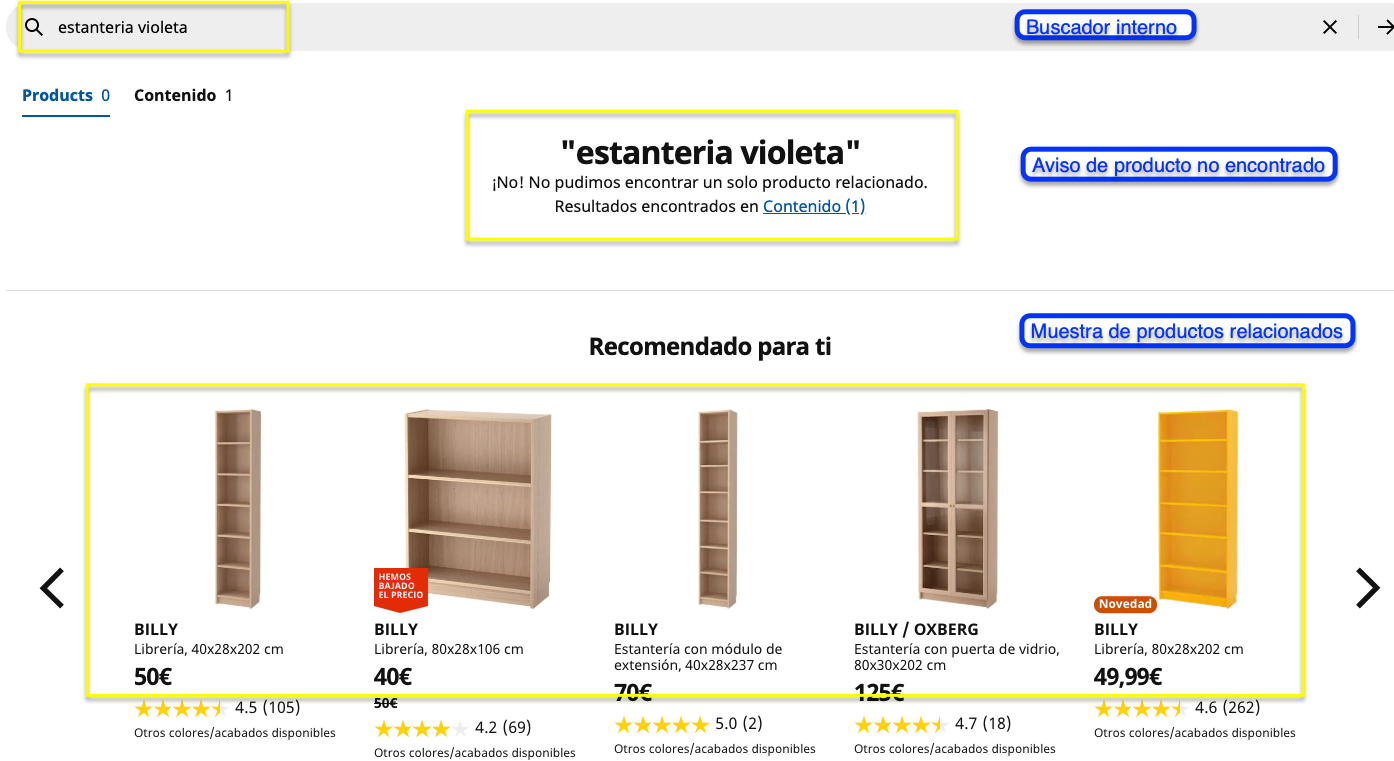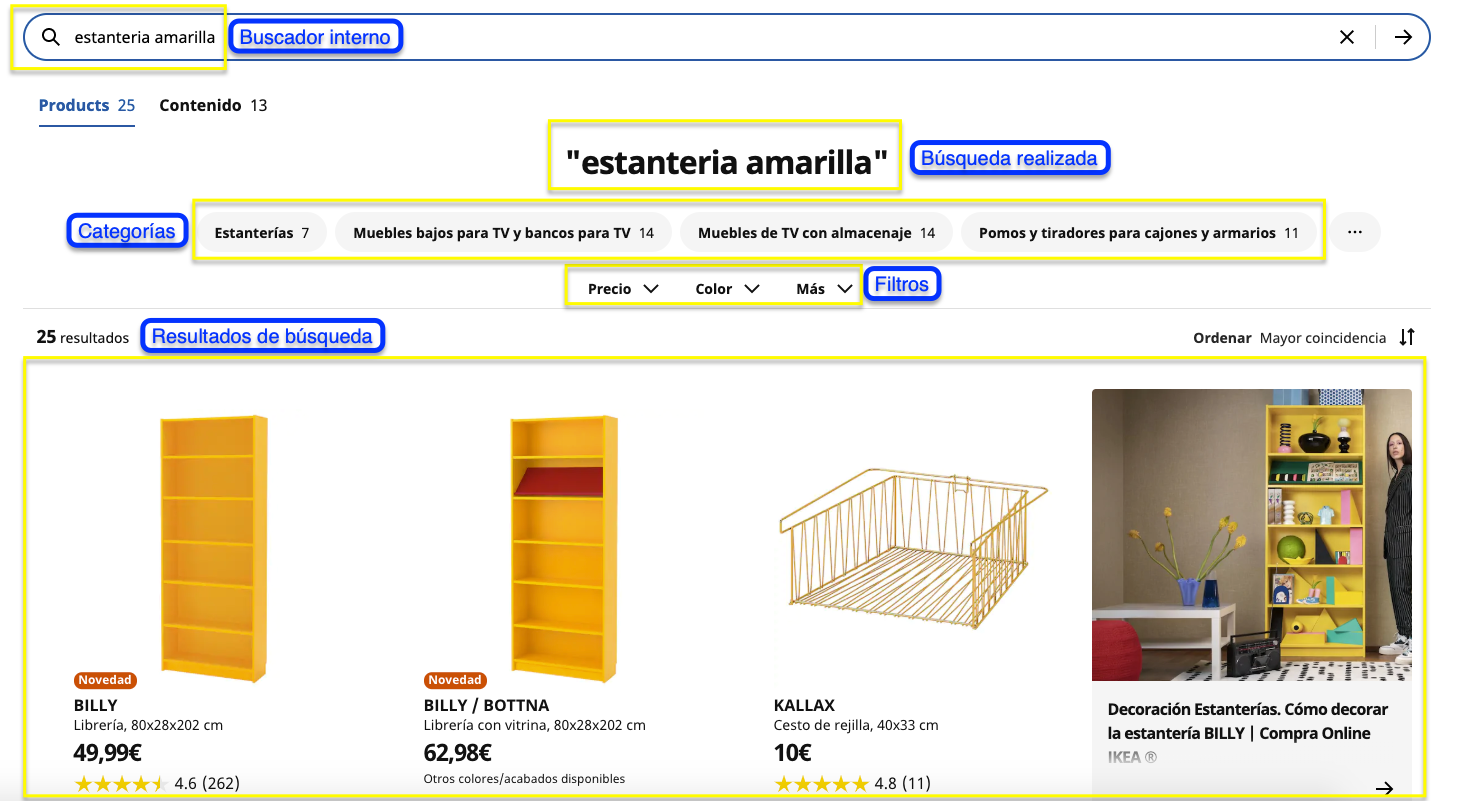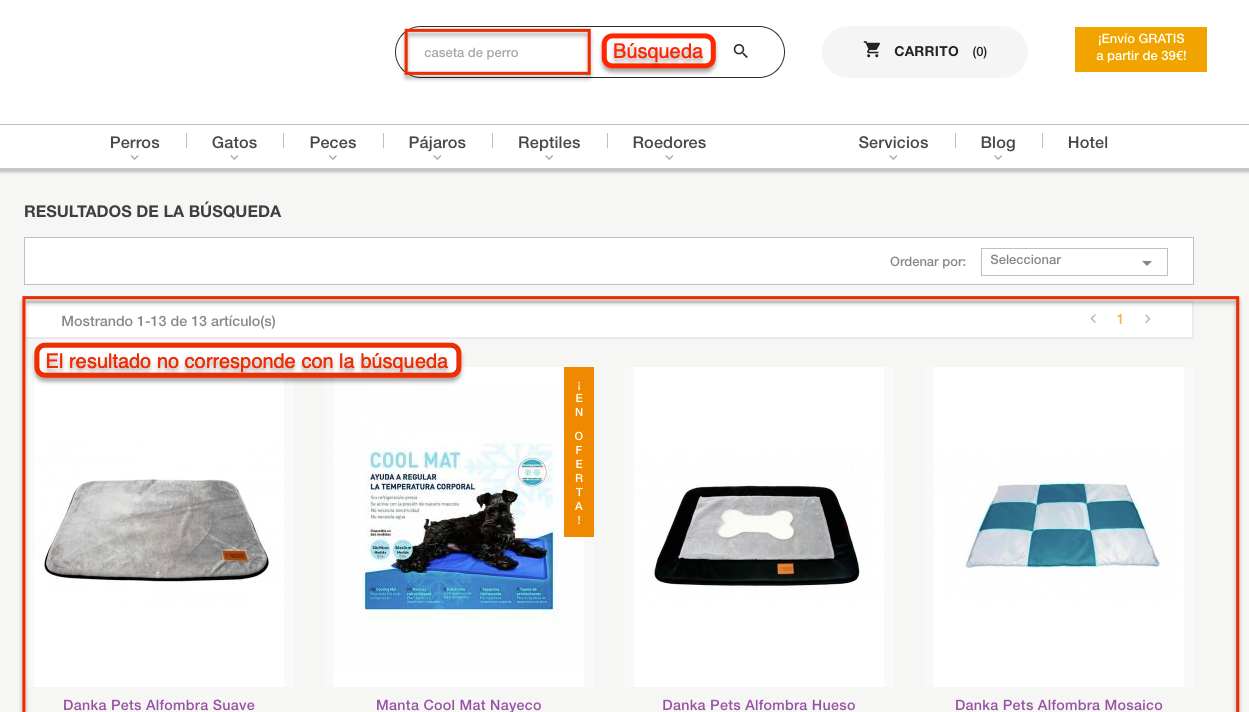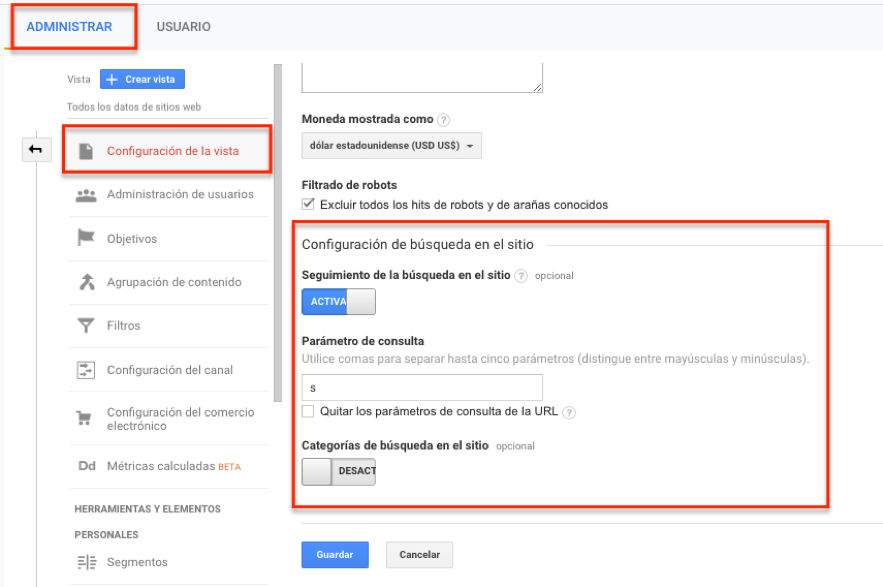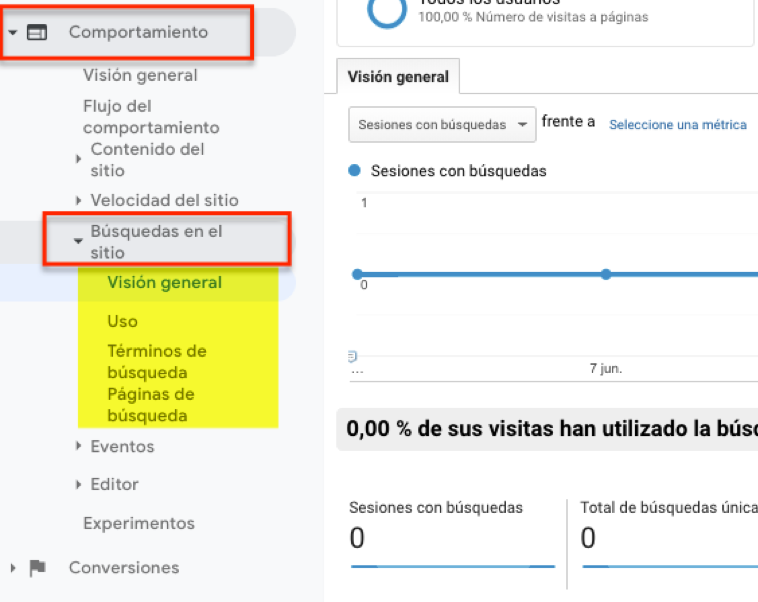Written by María Navarro
Index
- Benefits of using an internal search engine
- Characteristics of a good internal search engine
- Internal search engine result pages
- What should we take into account when indexing if we have a search engine on our website?
- How to avoid indexing of search engine URLs on a technical level
- Analytics “Site Searches” report configuration. Making the most of data
The internal search of a website is a very interesting resource for both SEO and usability. No matter what type of website we have, whether it is an ecommerce, a media, a blog, a corporate services page…, as long as it contains enough content it will be a good idea to consider incorporating this functionality.
In this article we explain the benefits of adding the search engine functionality, what to consider at a technical and indexing level and how to take advantage of this resource that can be easily implemented in most developments.
Benefits of using an internal search engine
We are impatient by nature and increasingly require more immediate responses. When a user lands on our website, if at first glance he does not find what he is looking for, he will probably leave. But if we have a search engine, we may be able to hold it a little longer. Who knows! We may even get him to convert.
Some of the benefits of incorporating search engine functionality into the website are:
- Improve the user experience by easily and quickly accessing the content they are looking for.
- Statistically, potential customers are more likely to use the internal search engine, since their intention is to immediately find the service, solution or product they need.
Informative benefits (web owner)
There is the option to know what content users are looking for internally and take advantage of it if we analyze the data:
- Knowing the words that our users use in the search engine will help us to improve our keyword strategy.
- Detect business opportunities, product or content that the user is looking for and we do not have available, so we can know them, evaluate them and incorporate them.
- Identify and correct website navigation or site structure problems.
Characteristics of a good internal search engine
The internal search functionality will add value to the website by making it easy and fast to show users the information they want. However, to ensure that this functionality is used and does not become a double-edged sword, we recommend some good practices to be taken into account:
- It must be visible and easy to find. It is recommended that it appears at the top of the website, but in a way that does not interfere with the user’s navigation.
- It is very important to make it clear that it is a search option and draw attention to it from the moment the user accesses our website.
- Use calls to action such as “Search”, “Search now”, include an icon that we quickly relate to search, such as a magnifying glass…
- It is recommended that the search tool provides results from the entire website and that these results are contextual to the search performed.
- One option to consider is that the search bar should have an autocomplete function, as it improves the user experience and makes it easier to search for existing content.
Internal search engine result pages
Search results pages are a means to an end, so it is very important that the information displayed is appropriate.
When a user performs a search there will be two possibilities: a listing URL with the results found or, on the contrary, a URL with no results.
Search without results
When we cannot show any search results, we may think that the user will leave the portal. Let’s relax: all may not be lost. In the case of not being able to provide a search result, a practice we recommend is:
- Clearly warn with a message that the product or service cannot be found.
- Show a section with other similar products, solutions, content, etc. that can add value and encourage the user to continue browsing.
- Another option would be to display a customer service form.
Example of a search WITHOUT a suitable result
Searches with results
The ideal is to first display a message that clearly indicates “These are the results for word-searched“.
In the case of having products, services, contents, etc. to offer, it is important to accompany the results with at least a title and an image. In the case of working with an online store, it would be appropriate to show filtering options to help navigate through the results obtained.
The results must be accurate and contextual with the search performed, since a bad result causes a bad experience and a safe escape of the user.
Example of search WITH result. Correct proposal
Example of search WITH NON contextual result. Incorrect proposal
What should we take into account when indexing if we have a search engine on our website?
As you may have guessed, all search results will generate a large number of URLs that will need to be controlled.
Should we index our search URLs? Our recommendation is that, in the vast majority of cases, we do NOT do so. But we must make it clear that each project is different, so there may be some cases where indexing should be treated differently. We are going to deal with the most common case, in which we are not going to index this type of URLs.
The reasons why we generally recommend not indexing search engine URLs are as follows:
- Google considers internal search results to be lower quality pages and therefore not relevant.
- Possible problems of weak content or duplicate content.
- We have limited crawl time and recommend that Google’s robot does not waste time crawling this type of content. Improved crawl Budget.
- We would avoid a large number of indexed URLs that would dilute the importance of the most relevant pages for our website.
How to avoid indexing of search engine URLs on a technical level
- Include in all URLs belonging to internal search results a robots meta: <meta name=”robots” content=”noindex,nofollow”/>
- Remove the canonical tag.
- Add rel with nofollow value to all links to the “search” URLs.
- Do not include any URL belonging to the search engine in the sitemap file.
- As a preventive measure, include in the robots.txt file Disallow either the parameter or the directory with which the search engine URLs work.
- Another preventive measure is, in the case of using specific URL parameters for this type of pages, to request that they not be indexed from the Google Search Console tool.
Analytics “Site Searches” report configuration. Making the most of data
As we indicated at the beginning of the article, internal searches are a very interesting source of data to improve our website and improve business strategies.
To have access to this information it is necessary to activate the internal searches of the site in Google Analytics.
Steps for setting up the internal search report in Analytics.
- Once inside the Analytics account we click on the Manage option.
- This option must be configured for each report view in which we want to have the users’ search activity data available. Therefore, select the appropriate view and click on View Settings.
- In the View Settings you will find the option Site Search Tracking. We must activate it.
- Next, an option called Query Parameter will be displayed. In this field you must enter the parameter used to generate the search URLs. Up to five parameters can be entered separated by commas and no additional characters such as “=” should be used.
- Remove query parameters from the URL is an option in case you want Analytics to suppress the query parameter.
- Finally, we save the changes.
The configuration offered is a basic configuration. If you need an advanced or have doubts on any point you can find more information in Google Analytics Support.
Once the configuration is done in our panel in the Behavior section, you will find a new section with all the data related to the internal searches of the website.
As soon as the tool starts recording data, it will be ready for analysis and you can start creating strategies to improve your website.
It’s true: since 2012 Google no longer shows us the searches that brought our users to our website. But nothing prevents us from analyzing their searches once they are on it, right?
If you run an online store and want to leverage site search to improve acquisition from search engines, here’s how we approach e-commerce SEO.
